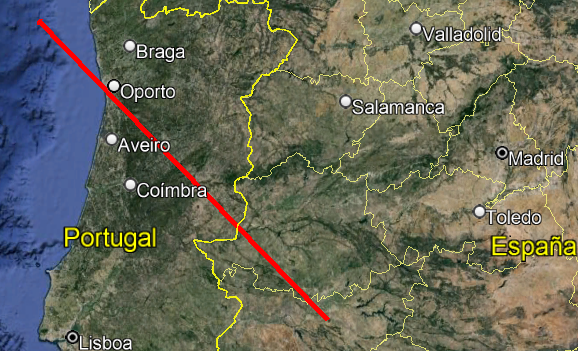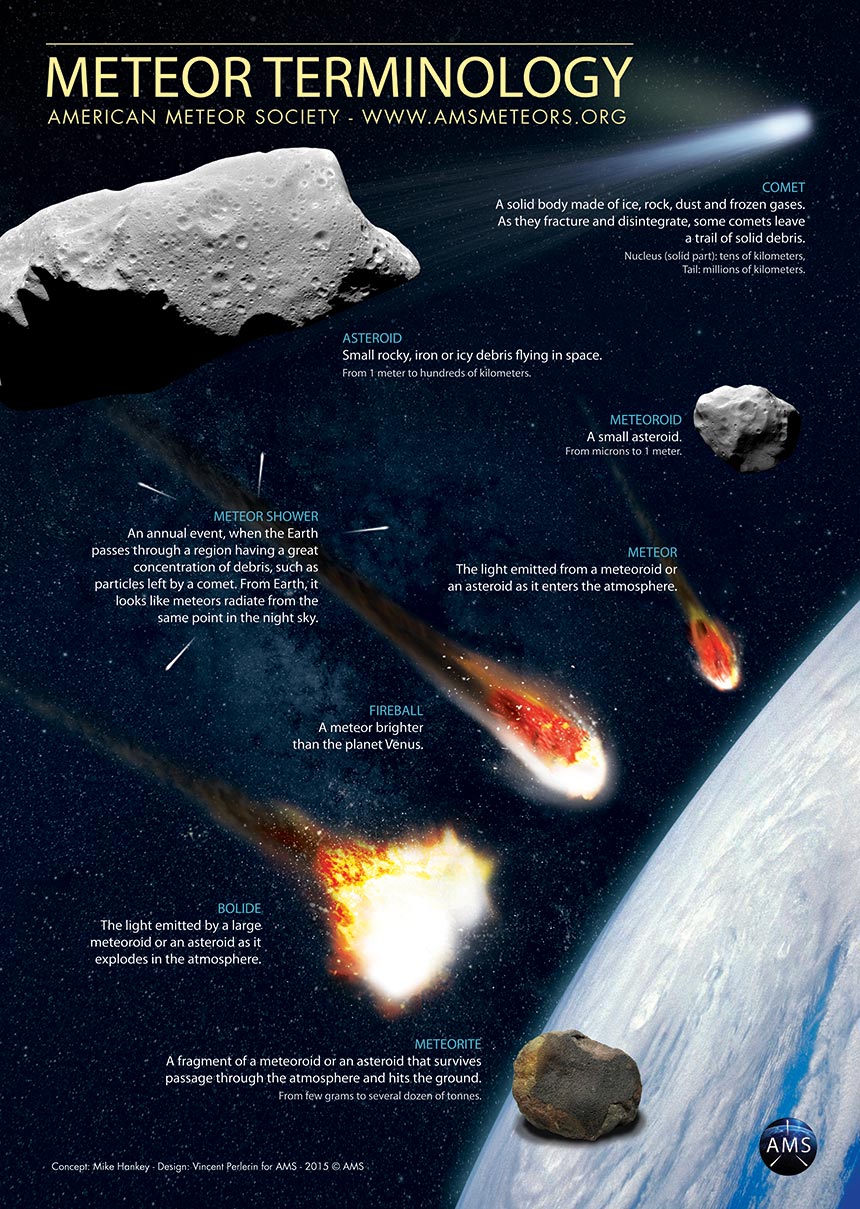Many people were out in Spain and Portugal on Saturday night. The one that were fortunate enough to be located in the Western parts of the Iberica peninsula could observe a dramatic meteoric event: a huge and fast moving fireball appeared in the sky and nearly turned it into daylight on May 18, at 22h 46min UT (equals May 19, 00h 46min CEST*)! The phenomenon was widely observed and filmed. AllSky7 network also captured wonderful videos of the event (see below) that should help in precising the orbital parameter of the small asteroid before it entered the Earth atmosphere, and then look for potential precovery images of it. Unfortunately, the trajectory of the impactor bring it over the Atlantic ocean, at the bottom of which the surviving meteorites must lay now…
*CEST = Central European Summer Time
If you witnessed this event and/or if you have a video or a photo of this event, please
Submit an Official Fireball Report
If you want to learn more about Fireballs: read our Fireball FAQ.
☄️ ESA’s fireball camera in Cáceres, Spain, spotted this stunning meteor last night!
Our Planetary Defence Office are currently analysing the size and trajectory of the object to assess the chance that any material made it to the surface.
Credit: ESA/PDO/AMS82 – AllSky7 pic.twitter.com/gSU4unncQW
— ESA Operations (@esaoperations) May 19, 2024
A very impressive fireball
This was maybe the second most dramatic astronomical European event of the week, after the aurora night on May 10-11. On May 18, 22h 46min UT, many people out and enjoying the warm temperatures oin Western Spain and Portugal were surprised to see their night sky turning into blue, as if it was daylight. A huge fireball, associated the a small asteroid atmopsheric entry, just passed over their head at a very high speed (around 45 km/s). Its long path was punctuated by intense flares, associated to the main mass fragmentation, which is clearly visible on some videos. The event was widely observed, and recorded by many amateur cameras as well as professional ones, especially from AllSky7 network.
Mirad el impresionante SUPER BÓLIDO que ha cruzado parte de España y Portugal esta noche!!¿Lo habéis visto? Si esa roca ha logrado tocar suelo entonces sí hablaríamos de #meteorito. De momento, super bólido/meteoro.
Así lo han grabado desde Portugal: pic.twitter.com/hgmJTuAsyB
— MeteoBadajoz (@MeteoBadajoz) May 19, 2024
Estoy asimilándolo todavía, en Galicia parecía que se podía tocar #meteorito pic.twitter.com/8K1Hd16mvB
— aan (@rvgzan_) May 18, 2024
A trajectory leading the meteorites to the ocean
According to calculations from a team of Calar Alto astronomical observatory, the trajectory of the fireball was roughly South-East to North-West (azimuth ~ 317°, Figure 1). The high speed of the asteroid combined with its long-lasting period made it visible on more than 450 km! It started being bright while it was 122 km high 40 km West of Mérida (Spain, Badajoz), 100 km West of the Spanish-Portuguese border. It then travelled North-West, crossing Portugal over the Southern parts of Porto, before continuing over the Atlantic ocean, over which it disappeared, while it was 70 km off the coast, in front of the Spanish-Portuguese border, and 54 km high. Meteorites are at the bottom of the ocean, but building the final trajectory of the asteroid may help in trying to find precovery images of it.

Bólido 18/05/2024:
Tipo de evento: cometario.
Velocidad inicial: 161.000 km/h.
Altitud inicial: 122 km.
Altitud final: 54 km.
España & PortugalProyecto S.M.A.R.T de @jmmadiedo
[+] INFO ➡️https://t.co/3VWtj4p5aK pic.twitter.com/A2vBfZJFt3
— Observatorio Astronómico de Calar Alto (@ObsCalarAlto) May 19, 2024
Fireball, Bolide?
Several thousand meteors of fireball magnitude occur in the Earth’s atmosphere each day. The vast majority of these, however, occur over the oceans and uninhabited regions, and a good many are masked by daylight. Those that occur at night also stand little chance of being detected due to the relatively low numbers of persons out to notice them.
Additionally, the brighter the fireball, the more rare is the event. As a general thumb rule, there are only about 1/3 as many fireballs present for each successively brighter magnitude class, following an exponential decrease. Experienced observers can expect to see only about one fireball of magnitude -6 (crescent moon) or better for every 200 hours of meteor observing, while a fireball of magnitude -4 (Venus) can be expected about once every 20 hours or so.





 You saw something bright and fast? Like a huge shooting star? Report it: it may be a fireball.
You saw something bright and fast? Like a huge shooting star? Report it: it may be a fireball.  You counted meteors last night? Share your results with us!
You counted meteors last night? Share your results with us!  You took a photo of a meteor or fireball? You have a screenshot of your cam? Share it with us!
You took a photo of a meteor or fireball? You have a screenshot of your cam? Share it with us!  You caught a meteor or fireball on video? Share your video with us!
You caught a meteor or fireball on video? Share your video with us!
One comment
This meteor was also observed from space in the data from the new MTG-I1 satellite Lightning Imager instrument:
https://www.esa.int/Applications/Observing_the_Earth/Meteorological_missions/meteosat_third_generation/Fireball_witnessed_by_weather_satellite